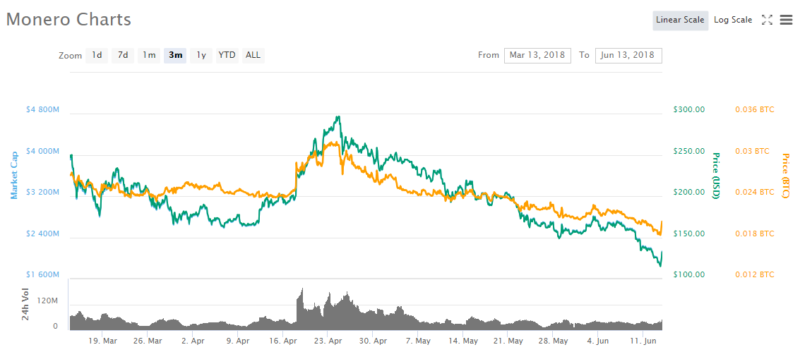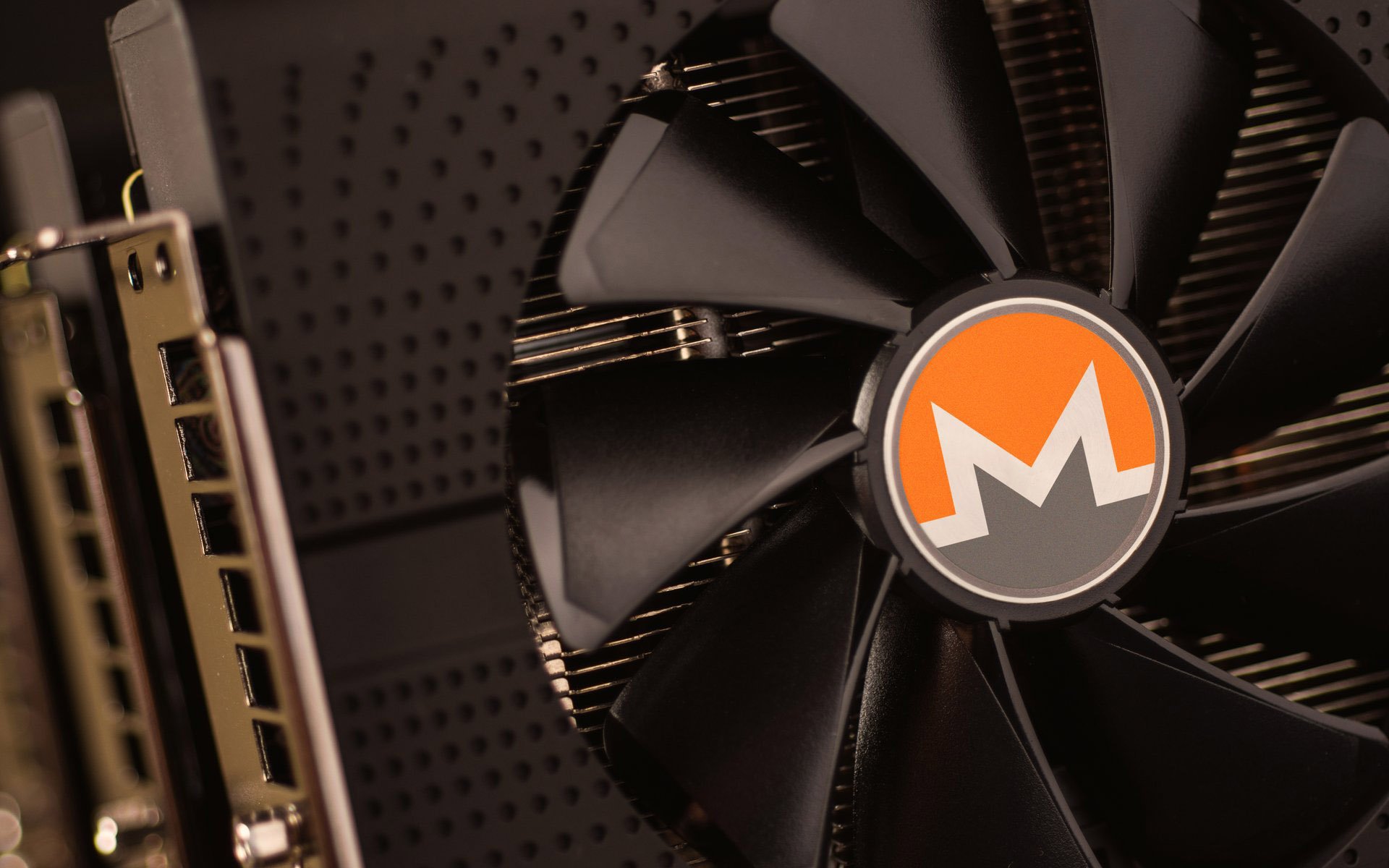Latest news about Bitcoin and all cryptocurrencies. Your daily crypto news habit.
The popular privacy coin has been one of the worst performers in the past month, especially since the pullback in early May. It has been steadily dropping in BTC value since late April, and it raises the question, why?
Privacy Isn’t Selling, Apparently
Monero is a staple in the cryptocurrency community, where most people involved in the space have, at the very least, a modicum of respect for the project. The network offers completely private transactions along with full fungibility of all the coins in circulation. Monero has seen some exciting developments over the past few months, but it doesn’t seem to have given investors much of a return.
The April pullback brought many coins back up in price, but it didn’t seem to effect Monero as much as others. Monero went from a low of $165 to a high of just around $290. Other altcoins had much more impressive numbers, however. Ethereum and Bitcoin Cash, for example, more than doubled their respective values in the same period.
What’s Been Going on with Monero?
The question confounding market analysts is, “Why?” Monero has taken some impressive steps in terms of adoption and tech, yet the price does not seem to reflect this at all.
At the end of May, Monero’s lead developer Riccardo “fluffypony” Spagni announced that he was planning on moving away from many leadership roles in the community. Usually, when someone in a leadership position exits, it raises questions about the future of the project. Some investors could look at an early warning sign of problems ahead. However, Spagni doesn’t plan on leaving the community altogether
I will always be an advocate for privacy, and for monero, a part of the monero community, but my actual responsibilities by definition need to be reduced.
Monero has been GPU minable since its inception as no ASICs were available on the market. Earlier this year, mining hardware manufacture Bitmain announced the Antminer x3, a CryptoNight mining ASIC. These ASICs worked for the same algorithm used on the Monero network.
On top of this, many believed a great deal of hashrate was coming from botnets – hacked computers that use their processing power to mine for the hacker.
Monero performs routine network upgrades via hardfork every six months, and the threats of ASICs and botnets raised some big concerns in the community. To counter the threat, the developers added a small tweak to the Monero mining algorithm to the April upgrade. Since ASICs are specialized to mine only one specific algorithm, the tweak would effectively brick any ASICs in existence.
It would also deal with the pesky possibility of botnets as the hacker can’t push an update to all infected computers to tell them to mine on the new chain. Monero has always been a target for hackers trying to mine on other people’s computers, as the network is completely private.
Monero launched their v0.12 software and the upgrade went beautifully. The hash rate before the fork was sitting at around 1000 MH/sec and dropped to over half that to 460 MH/sec once normal miners updated their rigs. This means at the time of the fork, over half the network was mining via botnets or ASICs.
Monero also saw Ledger Nano S integration earlier this month, a huge step for the fungible cryptocurrency. Via the latest Monero client, users can store their hard-earned XMR on a secure hardware wallet. It is expected that we will see Ledger release a Monero app, Ledger integration into the Monero GUI, or a third party client for connecting to Ledger in the near future.
Should We Be Worried About Botnets?
An interesting study found that the botnet fears may not be as well founded as we have been led to believe. Palo Alto Networks researchers studying crypto mining malware found that in roughly 630,000 code samples, Monero was being mined around 84 percent of the time. They were able to extract more than 2300 Monero wallet IDs which they then cross-matched to the mining pools used by the malware.
The researchers discovered that approximately 800,000 XMR had been mined via these botnets, but very few of the wallets had any significant amount of funds. Out of all of the wallets analyzed, it was found that:
- 55% of the wallets collected 0.01 XMR or more.
- 244 wallets collected 100 XMR or more.
- 99 wallets collected 1000 XMR or more.
- 16 wallets collected 10,000 XMR or more.
While those numbers seem shocking, that 800,000 XMR only accounts for 5% of all XMR minted on the network. Many would expect botnets to have a much more meaningful impact on the network.
Monero also has some exciting things coming up on their roadmap. Next, the team is set to release the new Monero GUI to compliment the client release. Later this year, we’ll see another network upgrade that will hopefully add bulletproofs, cutting Monero’s transaction size, and in turn fees, by around 80%. Bulletproofs are currently being audited by third-party firms, and the costs of the audit were fully funded by the community.
Do you own Monero? What do you think about the privacy coin’s slightly stunted price? Are you buying the dip? Let us know in the comments below!
Images courtesy of CoinMarketCap, Shutterstock, AdobeStock
Disclaimer
The views and opinions expressed in this article are solely those of the authors and do not reflect the views of Bitcoin Insider. Every investment and trading move involves risk - this is especially true for cryptocurrencies given their volatility. We strongly advise our readers to conduct their own research when making a decision.


